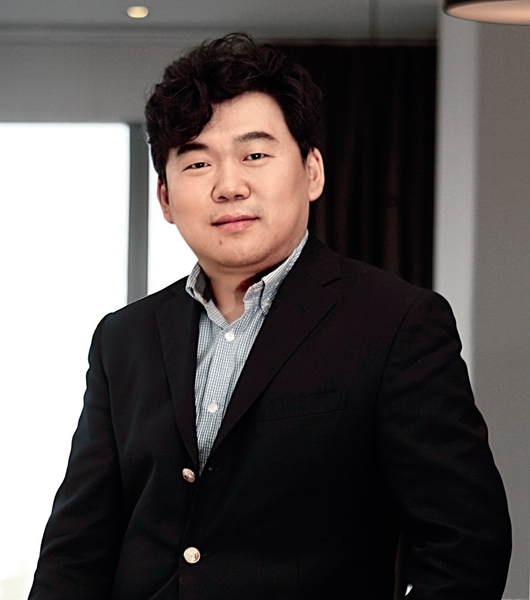Urban rejuvenator
- By An Xinzhu
 0 Comment(s)
0 Comment(s) Print
Print E-mail China Today, July 17, 2017
E-mail China Today, July 17, 2017
|
|
|
Wu Chen [Photo/China Today] |
Dashilar used to be a commercial center in old Beijing. Located just 200 meters from Tian'anmen Square in the city center, it has always been one of Beijing's popular tourist spots. But in recent decades the area has been overshadowed by the modern shopping malls in surrounding areas, particularly since the turn of the 21st century. Helping Dashilar restore its former glory was a challenge for Wu and his team.
It took them more than 10 years to draw up and refine its project plan. Wu Chen and the team carefully measured and evaluated each room and column in the area. After a dozen or so drafts, they eventually positioned the block as a fusion of tradition and modernity. Thanks to their efforts, today's Dashilar retains its old style while embodying contemporary vigor.
In 2010, Wu Chen's design won the bidding for China Zun. A tower block 528 meters tall in Beijing's Central Business District, China Zun is the city's tallest building designed by a Chinese architect. It also claims to be the world's tallest skyscraper capable of withstanding a magnitude-8 earthquake.
Internationally prestigious architects and architectural design offices took part in the bidding, but despite intense competition, Wu Chen's design was the most outstanding among the 80 tenders. The building's gently rising and curving shape resembles the ancient Chinese ceremonial vessel known as the zun, for which it is named. In showcasing urban vitality as embodied in traditional Chinese culture, Wu has set a good example for "Chinese design."
Potential world-class architects
"It is a great honor to be invited to take part in the Recruitment Program of Global Youth Experts," Wu said. "I've been working in an unfettered and pleasant atmosphere since returning to China, something an architect always appreciates." At the same time, China's rapid development has provided Wu with a platform on which to give full play to his expertise.
Wu is now head of the engineering and technological research center of Beijing's city planning and urban renewal. Established in 2015, it is China's first provincial level research center in this field. Wu always introduces himself as an architect, a city planner, and a city researcher. He hopes that his designs become integral to the country's rapid progress.
China boasts the world's longest high-speed railway network, and so has a growing need for bullet train stations and ultra large transportation hubs. Wu has designed seven high-speed train stations for several cities, including Guangzhou, Nanjing, and Qingdao. He has also put forward the design principle for China's fourth generation railway stations, wherein railway stations play a central role in a city's development, while urban planning serves as a technical platform.
Redevelopment of brownfield land and economic transformation are vital to reviving urban industrial ruins. Since 2009, Wu Chen has led his team's continuous research into the transformation of the old Beijing Shougang Group factory site. One of China's leading steel manufacturers, the plant began relocating some of its facilities to Hebei Province several years prior to the 2008 Beijing Olympics. This was one of the country's largest industrial district renovation projects. Wu's team has transformed the disused complex into an organizational hub for the 2022 Winter Olympics. More renovation projects are in progress on the old factory site, so demonstrating the successful transformation of an industrial district.
Since last year, Wu has used mathematical models to analyze and simulate complex urban problems. Beijing is now building its suburban Tongzhou District into a subsidiary administrative center to ease overcrowding in the city, thus reshaping the city's spatial pattern.
"Beijing's historical areas are embracing the opportunity to revive traditional culture," Wu said. Construction of the capital's subsidiary administrative center and Xiongan New Area, an economic zone in Hebei Province about 100 kilometers southwest of Beijing, provide favorable conditions. Wu expects architects and city planners to grasp this chance. "World-class architects from China will most likely come to the fore from our generation onwards," Wu concluded.







Go to Forum >>0 Comment(s)